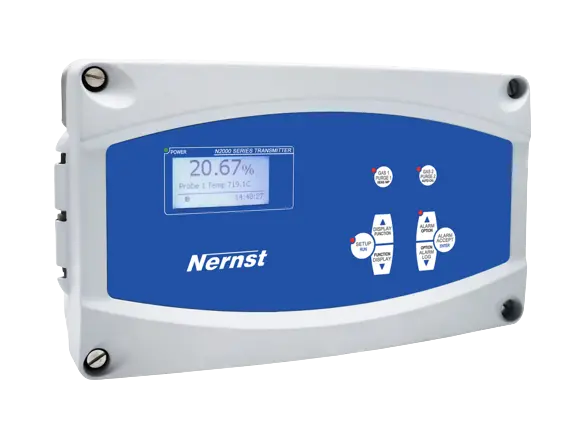Oxygen analyzers can monitor the oxygen content in heating furnaces, chemical reaction vessels, boiler water and other places in real time in industrial production such as petrochemicals and electric power to ensure safety and stability in the production process. Through accurate measurement, enterprises can adjust process parameters in time, optimize production processes, and improve product quality and production efficiency. It is also widely used in the field of environmental monitoring to measure the oxygen concentration in the atmosphere and evaluate air quality.
Understanding the functional characteristics of each component of the oxygen analyzer will help to better use and maintain the instrument and ensure the accuracy and reliability of the measurement results.

1. Sensor
Function: The sensor is its core component, which is responsible for directly sensing the oxygen concentration in the gas and converting it into an electrical signal.
Features:
Electrochemical sensor: suitable for low-concentration oxygen content measurement, cost-effective and fast response, but short service life (usually 1-3 years).
Zirconium oxide sensor: suitable for continuous online monitoring in high temperature environment, with good long-term stability and high temperature resistance, but the price is high.
Paramagnetic sensor: very effective for oxygen measurement in the medium concentration range, especially suitable for occasions requiring high sensitivity and stability.
2. Measurement circuit
Function: Amplify and process the weak electrical signal output by the sensor for subsequent data analysis and display.
Features: High-precision, low-noise electronic component design ensures the accuracy of signal processing. Some models also integrate automatic calibration function to reduce human error.
3. Display unit
Function: Used to display measurement data in real time and provide an intuitive operation interface.
Features: Modern instruments are mostly equipped with LCD or OLED display screens, supporting multiple display modes (such as digital display, trend chart, etc.). Some products also support touch operation, which enhances the user experience.
4. Data storage and transmission module
Function: Save measurement data and exchange data with other instruments via wired or wireless means.
Features: Built-in large-capacity memory, which can save a large amount of historical data for a long time. Supports multiple data interfaces (such as USB, RS232, Ethernet) for easy data export and remote monitoring. Some models also support Wi-Fi or Bluetooth connection, which further improves the convenience of data transmission.
5. Calibration and self-diagnosis system
Function: Regular calibration to ensure measurement accuracy; at the same time, monitor the operating status to detect potential problems in time.
Features: Most instruments are equipped with an automatic calibration function, and users only need to follow the prompts to complete the calibration. The self-diagnosis system can detect hardware failures in real time, such as sensor failure or power supply abnormalities, and issue an alarm.
6. Power management system
Function: Provide a stable and reliable power supply for the entire analyzer.
Features: Usually powered by rechargeable batteries or external power adapters, some portable models are also equipped with solar charging panels to extend the working time during field operations. It has functions such as overload protection and short-circuit protection to improve the safety of use.
By understanding the functional characteristics of each component of the oxygen analyzer, it can not only help users better use it to complete various measurement tasks, but also provide guidance for daily maintenance to ensure that it is always in good working condition. This is of great significance to ensure the safety, reliability and economy in various application scenarios.
Post time: May-08-2025



